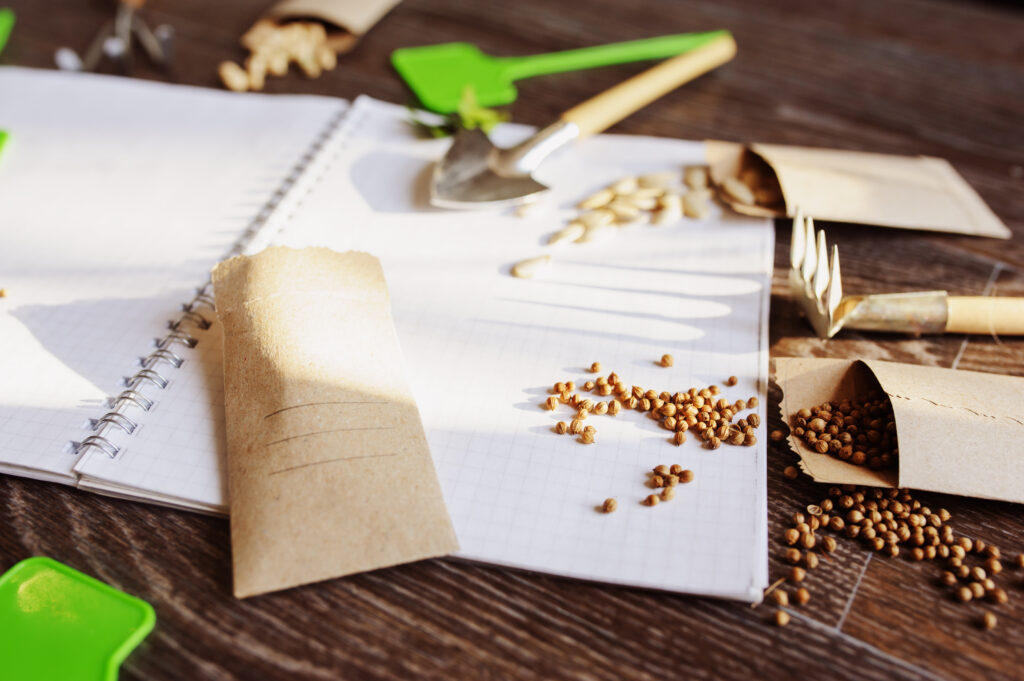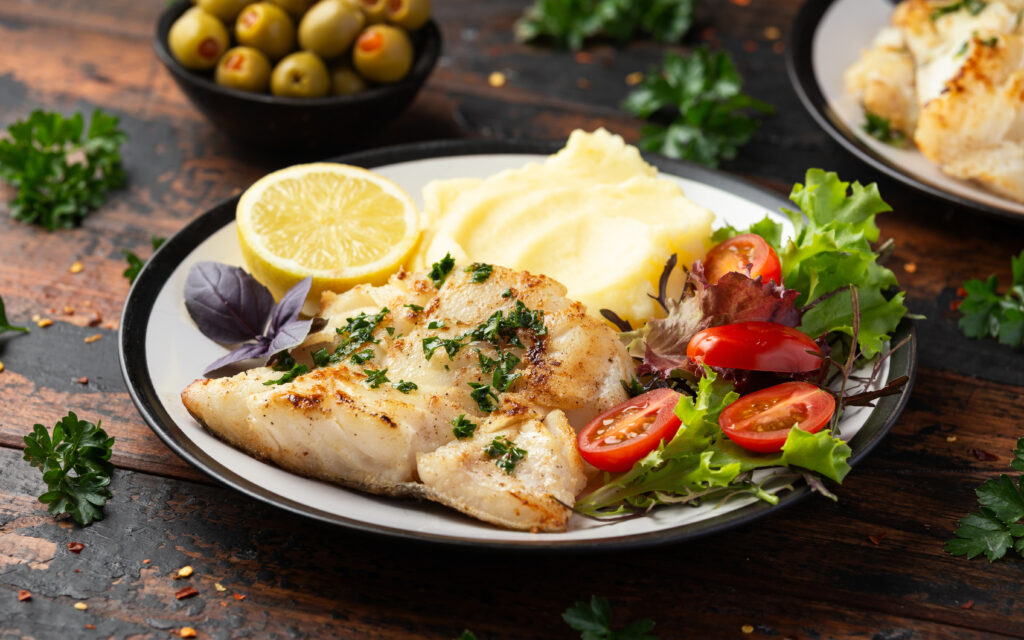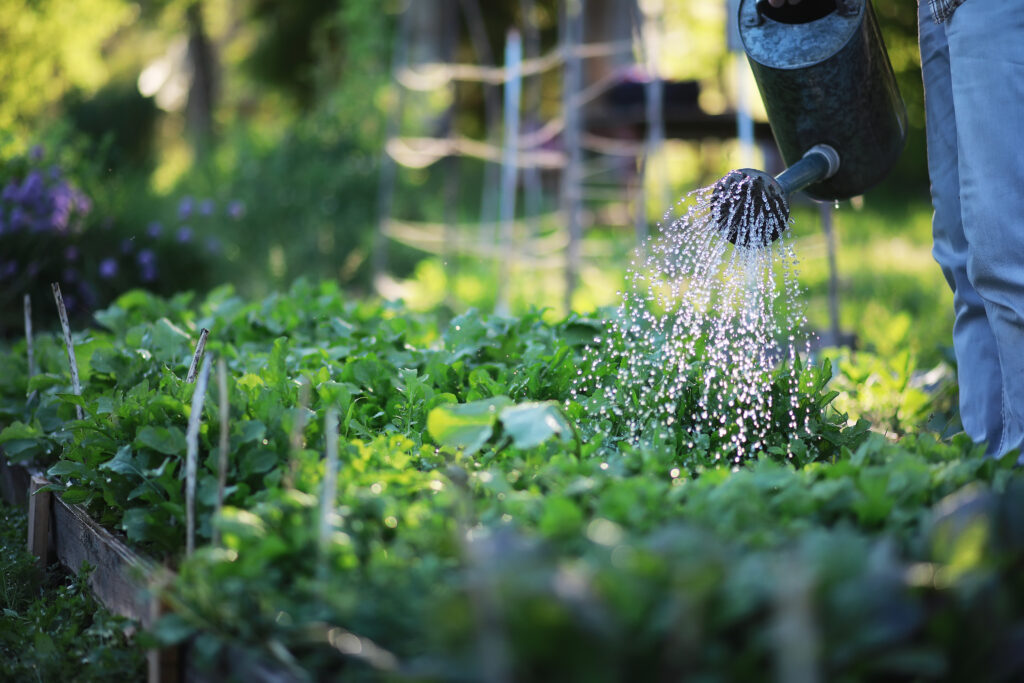
This is one of my favorite times of the year. The weather is too cold for working outside, my work schedule is slow after the holidays and I have more time to travel and make plans for what is to come for the year ahead. When it comes to gardening this is the time when I forget about the hard times, the bugs that would eat my broccoli and the wilt I would see after getting back from a long weekend of camping. I would forget about watering first thing in the morning, constantly weeding and about the animals and pests that would try to eat my berries, flowers and more. That’s right, I forget about the hard part of gardening and think about the fresh produce that ends up on my plate each evening, walking out to the garden for the basil that my current recipe calls for or even the zucchini casserole that we eat at all times of the day. One of the best feelings is seeing a dinner plate that is completley grown, gathered, caught and made by my family. I love that feeling and now is the time to start planning so that I can can feel that throughout the summer and fall. When planning your garden it is imporant to think about a few things…

- What are you going to grow?
This is probably the easiest and hardest question that every gardener asks themselves. Personally, I want to grow it all. I want to try to see if I can do it. I want to try eating veggies I haven’t had before and I want to see what I’m capable of. One year I tried to grow SO much more than I should have and ended up with my worst garden since starting. I was a bit too ambitious and ended up feeling like a failure. The worst part? I wasted so much food and felt horrible about it.
Now I plant what we eat. We LOVE cucumbers, so I plant several cucumber plants. I plant them at different times so that we always have 2-3 cucumbers that are ready to be picked. We use tomatoes almost everyday in our cooking and I also make sure to have them in my garden. I’m not always successful, but since moving to Pennsylvania, I’ve had a lucky streak going that I hope continues. We also make sure to plant zucchini, peas, green beans, flowers and more.
Think about what you actually eat and not what you would like to eat. Start small. If you gain any insight to gardening from me, that is my best advice. Start small! Plant one cucumber plant and see how you do. Add basil and parsley to some pots on your porch, but please do not rip up half your backyard until you know if you will like gardening or not. You may hate the work, but I hope you don’t. It is truly rewarding and so much fun.
- Where do you get sunlight in your yard and for how long?
If you haven’t taken notice to this before, you should start paying attention. Some veggies require full sun for a full day, while others work better in the shade. This time of year is a bit tricky for finding your sun, but it can still be done. Some key factors are the directions that you place your plants. The sun rises in the East and spends time in the South until it sets in the West. If you aren’t sure where you get the most sun, head outside with a compass (I have an app on my phone) and find out which way is south facing.
If you are planting outside, do you have any buildings, sheds, fences or trees that will block the sun? Our garden can only be in one area of our yard with our septic system and shed, but the fence around it grows vines and weeds like it was there for them and not to keep animals out. I have to strip the vines and weeds at least 3 times throughout the summer. This allows the sun to reach the front of my garden for the maximum time I can get. Behind the shed is a dead space that is best used for some herbs, lettuces, carrots and potatoes. I mostly use this area for storage, but have had some success with potted herbs.
It may sound tricky, but it is really not. Just take notice to where the sun is coming from and where it hits in your yard. I honestly think to get started the only thing you really need to worry about is which way is south and what is blocking the sun for you. You got this!

- How much room do you have?
Plants need space to grow. I’ve read some great books about container gardening, square foot gardening, and vertical gardening to get the most out of my space. Before planning your garden in detail, think about how much room you have and how much you need. You already thought about what you are going to grow, now it just takes a moment to look up how much room they need to thrive. Some plants just need a few inches, while others need a whole foot. If you are just starting, I definitely think starting small is the best way. Some people prefer container gardening on their back porch and other prefer kneeling in their gardens. No way is better; it is all a matter of preference. I do both and enjoy both equally.
- Are you going to start your own seeds, buy starts, and/or just wait and plant seed in the ground?
This question may seem silly, but now is the time to think about it. If you are into the whole start to finish process of gardening starting seeds will bring that to you. It can be crowded (it takes inside space) and it can be overwhelming when trying to decide when to start moving them outside, but when it works it is a great feeling. Buying starts is easiest, but it can get costly. It is a fun way to try a new variety, or just to start in general. Planting seeds in the ground is another option and really just depends on what you are looking to grow. Some plants do not do well when they are transplanted and too fragile for it.
We usually do a mix of all three. I enjoy seeing the seedlings start in February and March, but some things I have better luck with starts. I do mostly seeds in the ground, but no way is better or worse. You already thought about what you are going to plant, do a bit of reading and find what is best for you and those plants. Easy Pea-sy…see what I did there?!
- What zone are you in and when your first and last frost date?
Finding your hardiness zone is very important. It determines what plants you can grow and when. You can head to any seed website and look up your hardiness zone, or click this link for the USDA Plant Hardiness Zone Map and website.
It also helps to determine your first and last frost date. The seed instructions reference these dates A LOT. It will tell you how early to start those seeds before the first frost and when you last chance to do it again before the last frost. This is a simple google again and is simple, yet important, information to find out.

While it may sound like a lot, answering these questions will help you to not only plan your garden, but also execute it with ease. I hope these items help you get your garden started and that it makes it a bit easier to get started!
As always, thank you for reading and joining us on this journey. Simply, Beth

[…] the factors that will help us figure out when to start planting and how to start our gardens. (If you missed that article click here). This week I’m going to share some basics about starting seeds well before the snow is not a […]
Comments are closed.